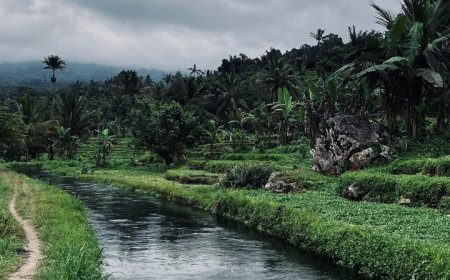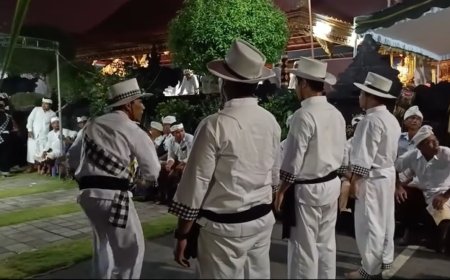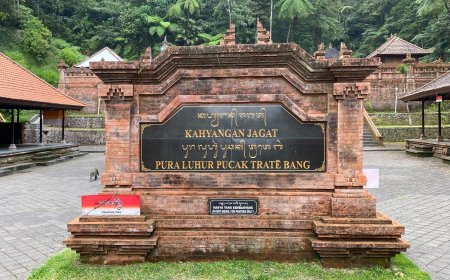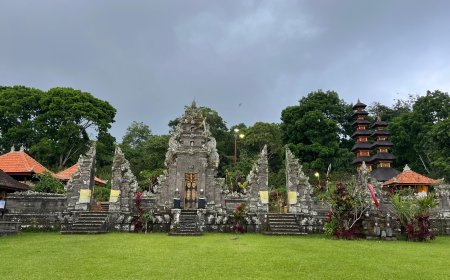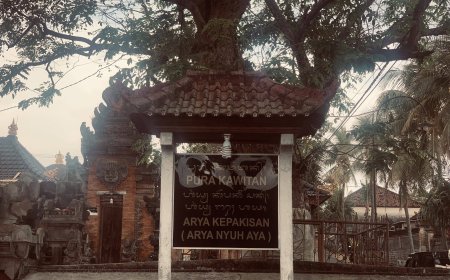Temples as Ancestral Relics: Batan Bingin Pasek Padang Subadra Temple
Merajan Ageng or Pura Dadia is a temple that is basically in the same group and has the same meaning, namely as a heaven specifically for several family groups in one lineage to be able to establish kinship relationships. The temple is a relic of the ancestors and is a form of worship for deceased ancestors, where later the temple will be held accountable (pengempon) by several families who are the lineages of these ancestors. One of the Merajan Ageng or Sanggah Gede or Dadia Temples in Tanjung Benoa Village is the Batan Bingin Pasek Padang Subadra Temple. This temple is more precisely located on Jalan Pratama, Tanjung Benoa Village, South Kuta, Badung, Bali. Pujawali or piodalan at Batan Bingin Pasek Padang Subadra Temple is held once every six months, which coincides with the day or rahina of Buda Cemeng Kelawu.
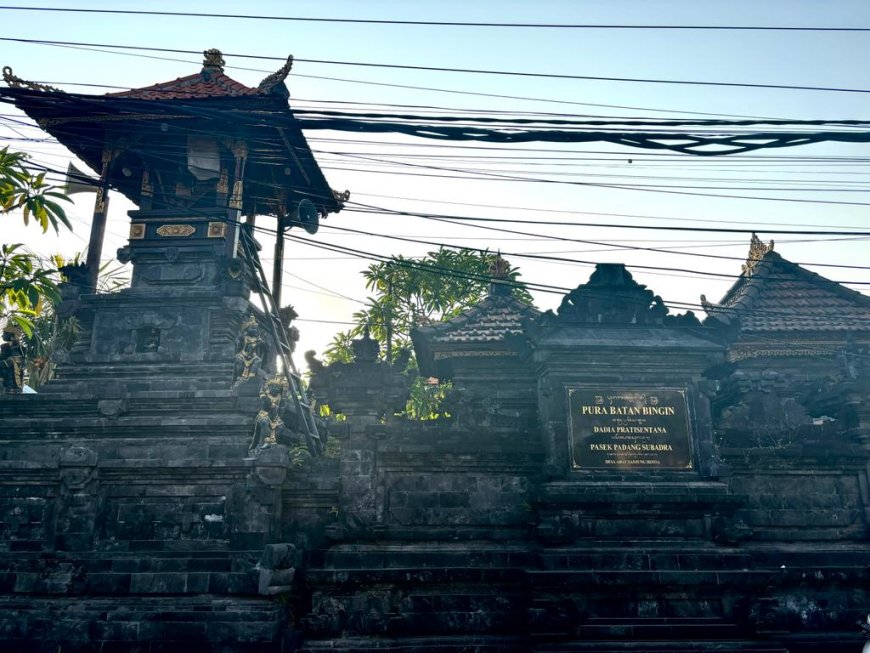
A temple is a sacred place of Hinduism which functions as a shrine and worship place for Ida Sang Hyang Widhi Wasa and all his manifestations, and is a place of prayer for Hindus. In Bali, it is very famous for the many temples in all corners and regions of Bali, so that Bali has earned the nickname as the Island of a Thousand Temples. There are many types of temples in Bali, such as Tri Kahyangan Temple, Sad Kahyangan Temple, Dhang Kahyangan Temple, Kawitan Temple, Ancestor Temple or commonly called Dadia Temple and others. Temples in Bali are not only public holy places where anyone can pray and offer offerings (banten), However, there are also several temples which are relics of ancestors and serve as worship for deceased ancestors, where later these temples will be held accountable (pengempon) by several families who are the lineages of these ancestors. This ancestral heritage temple is usually called Merajan Ageng/Sanggah Gede or Pura Dadia. Merajan Ageng/Sanggah Gede or Pura Dadia is a temple that is basically in the same group and has the same meaning, namely as a heaven specifically for several family groups in one lineage to be able to establish kinship relationships. Apart from being a sacred place of worship for ancestral spirits and a place of prayer, one of the functions of Pura Dadia or Pura Panti is that during odalan, all relatives can work together in preparing the facilities and infrastructure for odalan and can gather to relieve each other's longing because they live far away. and rarely see each other.
In Hindu religious teachings, worship of ancestors is an obligation that must be carried out by pratisentana (descendants). One of the Merajan Ageng or Sanggah Gede or Dadia Temples in Tanjung Benoa Village is the Batan Bingin Pasek Padang Subadra Temple. This temple is more precisely located on Jalan Pratama, Tanjung Benoa Village, South Kuta, Badung, Bali. Batan Bingin Pasek Padang Subadra Temple is not only Merajan Ageng or Dadia Temple and a place of prayer, but also as a silent witness to the footsteps of previous ancestors who are rich in history and stories from the community.


Pelinggih – Pelinggih of Batan Bingin Pasek Padang Subadra Temple
(Source: Own Collection)
Batan Bingin Pasek Padang Subadra Temple has 15 pelinggihs which are rich in meaning and symbolism of each pelinggih. Each pelinggih contains religious values and ancestral stories that adorn the history of this temple. Some of the pelinggih found at Batan Bingin Pasek Padang Subadra Temple are Pelinggih Pengelurah, Pelinggih Kemulanhyang, Pelinggih Bhatarahyang, Pelinggih Dalem Pemutih as the singer of Pura Geger or Pura Dalem Pemutih, Pelinggih Samuan Tiga, Pelinggih Ratu, Pelinggih Kawitan which is the Pelinggih as the singer of the temple Kawitan Pasek Padang Subadra. After that there are also Pelinggih Gunung Agung, Pelinggih Batur, Pelinggih Dalem Ning which is the Pelinggih Penyawang of Dalem Ning Temple which is located in Tanjung Benoa Village, Pelinggih Batara Sedana, Pelinggih Rajuk Tenggeng, Pelinggih Tajuk Batara Sedana, Pelinggih Tugu Indrabaka, and there is also Pelinggih Panjang Great. One of the pelinggihs that has the characteristic of being the first to exist or the first to be built is the Bhatarahyang pelinggih. Apart from the pelinggihs, at the Batan Bingin Pasek Padang Subadra Temple there are also 3 bales which have their respective functions. These bales include the bale which is specifically for the stakeholders to cast and pray for offerings during ceremonies or piodalan, the second is the bale for the musicians and a place to place the gamelan which will be used during the piodalan or pujawali, and the last is the bale for the seka ballad.
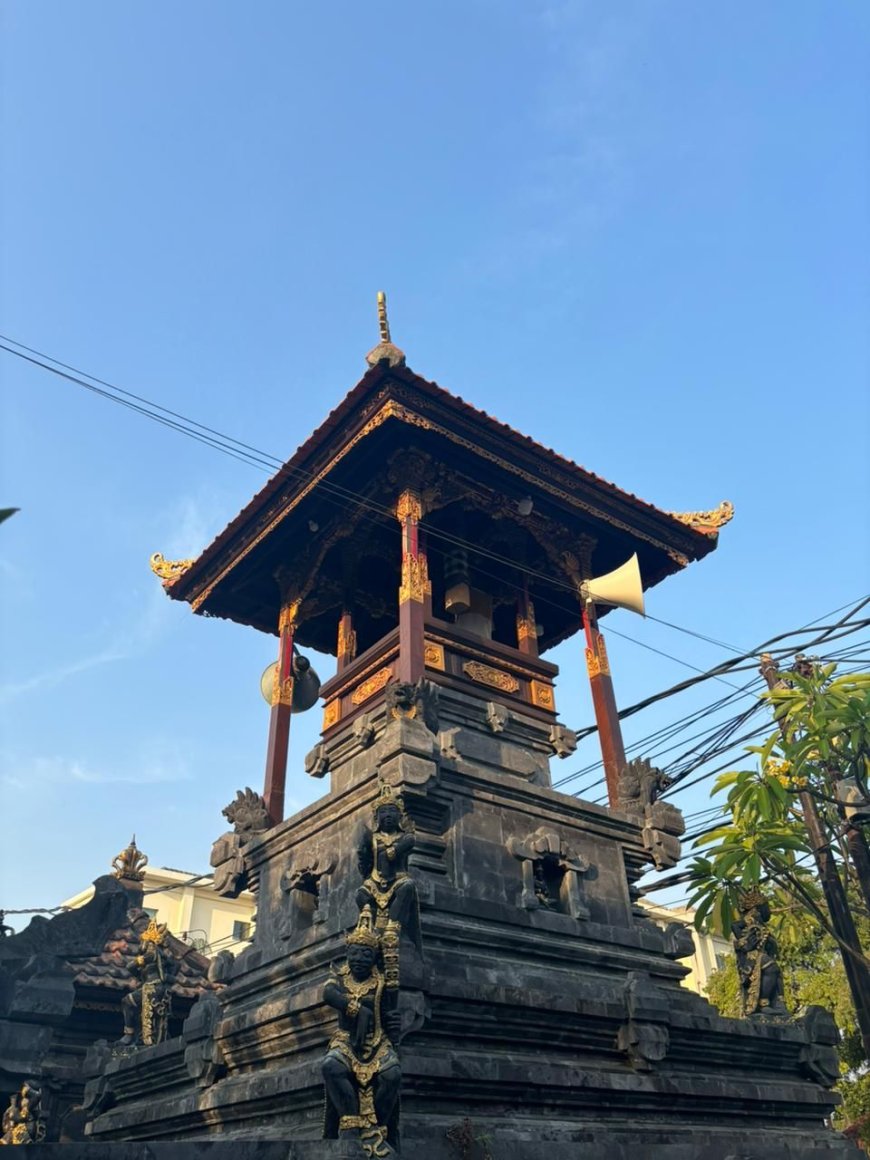
Bale Kukul Pura Batan Bingin Pasek Padang Subadra (Source: Own Collection)
Pujawali or piodalan at Batan Bingin Pasek Padang Subadra Temple is held every six months, which coincides with the day or rahina of Buda Cemeng Kelawu. So it can be concluded, pujawali is held twice a year. There is a tradition that has been carried out from generation to generation from ancient times, namely during the second Pujawali of the year, the day before Pujawali, the people who are the temple's guardians carry out a groundbreaking (melasti) to the sea or beach. Segara or the beach used as the verification site is the beach located to the east of Dalem Ning Temple and Taman Beji Temple. To get to Segara or the beach, people will pass by Pura Desa Lan Puseh and Catus Pata, Tanjung Benoa Village. This verification is carried out in the afternoon and the peak of the pujawali or piodalan at this temple is held in the evening. Apart from the verification tradition which has been carried out from generation to generation until now, in ancient times there was also a tradition carried out by the people who were the founders of the Batan Bingin Pasek Padang Subadra Temple, namely the jasangeran tradition. This jasangeran tradition is a Balinese cultural tradition in the form of Balinese dance art combined with Balinese songs. However, it is a shame that the Mejangeran tradition is never performed again nowadays because there are no longer any successors to the Mejangeran tradition.




















